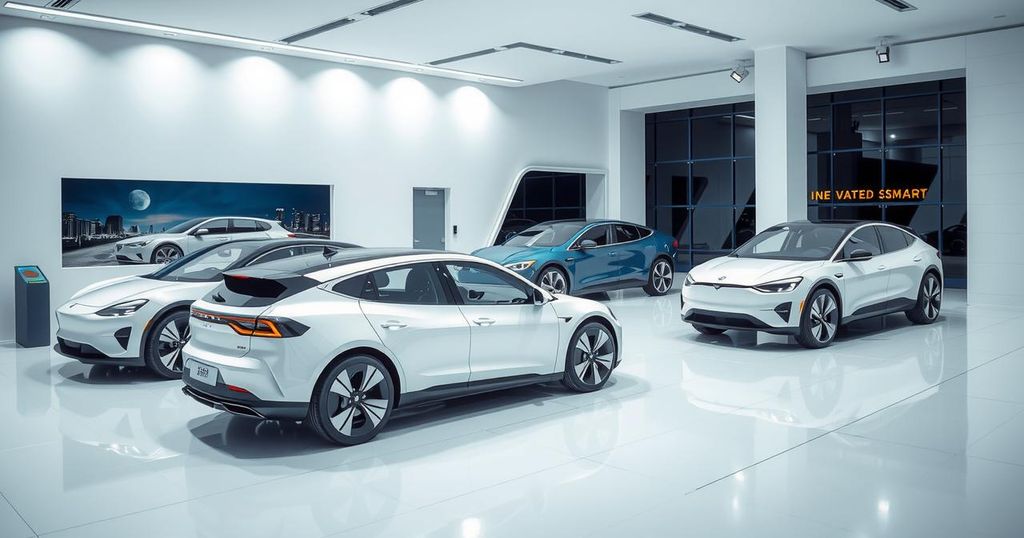Weekly News Roundup: Developments in Global Semiconductor Sector from May 12-18
This week’s roundup highlights China’s strides in lithography technology, Samsung’s key win with Nintendo, and TSMC’s ambitious plans for expansion. Europe is also considering a ban on Chinese solar inverters, indicating rising tensions about tech dependencies and cybersecurity.
In the week spanning from May 12 to May 18, significant developments unfolded within the global tech and semiconductor industry. Notably, China is intensifying its DUV lithography initiatives, Samsung is regaining traction with new foundry orders, and TSMC is expanding its global manufacturing presence. These stories resonate powerfully amid shifting dynamics affecting these industries as they respond to challenges and opportunities.
China’s push into DUV lithography equipment is noteworthy, especially as it comes in light of restrictions on exports from the United States. A new 193nm dry ArF system has been announced, boasting capabilities of 65nm resolution and 8nm overlay accuracy with a projected availability in September 2024. Yet, these advancements still lag behind those achieved globally. The Chinese Academy of Sciences and Beijing RSLaser are spearheading the research into immersion DUV technologies. Rumors suggest that SMEE has delivered a 28nm immersion prototype, though details remain unconfirmed and this technology is not yet ready for production. These moves reflect China’s ongoing ambition towards semiconductor self-sufficiency, although experts assert that advanced lithography remains several years from maturity.
On another front, Samsung Electronics has successfully clinched a pivotal 8nm foundry order with Nintendo for the Switch 2. The order is expected to accommodate shipments of 15 million units in the fiscal 2025, employing Nvidia’s Tegra SoC, which could lead to future orders from prominent players such as Nvidia and Qualcomm, who are also looking at Samsung’s 2nm GAA technology. Samsung is currently operating at yields between 40–50% for its 2nm process, aiming to reach 60% for mass production. Additionally, with quicker delivery and competitive pricing, many 5nm orders are shifting towards Samsung. Production lines that had been idle are now being revitalized, with a full operational ramp-up anticipated for the latter part of 2025.
As Chinese Integrated Device Manufacturers (IDMs) continue to rise, major European firms are witnessing declines in their market positions. The global power semiconductor market has dropped to approximately US$32.3 billion in 2024, resulting in Chinese companies Silan and BYD advancing to sixth and seventh ranks with market shares of 3.3% and 3.1%, respectively. For instance, Silan reported revenues of about US$1.066 billion, while BYD achieved impressive EV sales of 4.25 million units. Comparatively, key players such as Infineon, Onsemi, and STMicro have experienced market share losses. Despite China’s local chip self-sufficiency still being under 15%, the nation aims to increase this to 25% by 2025, bolstered by state support. Silan is actively expanding its IGBT and SiC capabilities through new projects in Chengdu and Xiamen, while Hua Hong Semiconductor is enhancing its foundry capabilities through collaboration with STMicro.
In an ambitious move, TSMC has laid out plans to construct eight additional wafer fabrication facilities and one advanced packaging plant to cater to the surging demand for AI and High-Performance Computing (HPC) applications. This announcement was made during TSMC’s 2025 Technology Symposium. The new 2nm fabs located in Hsinchu and Kaohsiung are expected to come online this year, with Fab 25 in Taichung expected to begin operations by 2028. Notably, MediaTek has highlighted that AI chip shipments are set to increase twelvefold from 2021 to 2025.
This week illuminated the evolving landscape of the semiconductor industry where Chinese advancements pose a growing challenge to established players. Samsung’s resurgence in foundry orders indicates a recovery trajectory, while TSMC’s plans for significant expansion underscore a proactive response to the high demand for advanced chip technologies. As Europe grapples with potential bans on Chinese solar inverters over cybersecurity, the attention to economic and technological independence intensifies, marking a critical juncture in global semiconductor dynamics.
Original Source: www.digitimes.com




Post Comment